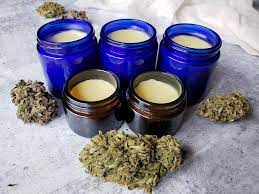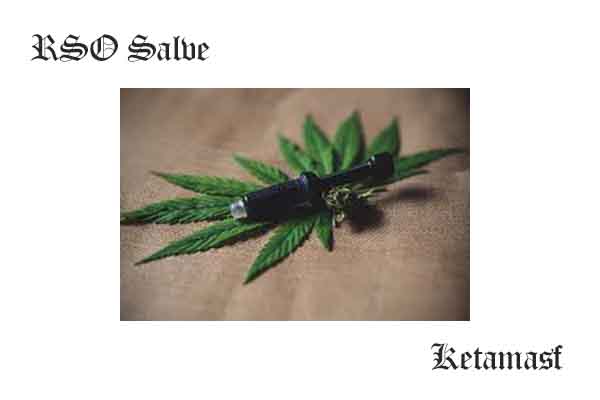To grow and make your own medicine… that is the stuff that dreams are made of, am I right?! We like to use our organic homegrown cannabis in a variety of ways, but making topical cannabis salve is on the top of the list. Cannabis salve can help to reduce inflammation, soothe skin irritation, joint pain, and more! It also happens to be quite simple to make your own cannabis salve, and easy to customize it to suit your needs.
What is Cannabis Salve
Maybe we need to step back a moment. How about, “what is a salve?”. A salve is simply the term for a healing solution that you put on your skin, including creams, ointments, or balms. Generally, salves are fairly thick, shelf-stable, and include nourishing oils such as coconut oil, olive oil, sweet almond oil, or others.
In our cannabis salve recipe, we prefer to use mostly coconut oil, because it is full of saturated fat that binds well with cannabinoids. It is also ultra-moisturizing. We also add a dash of olive oil to increase absorption and smoothness. To learn more about various carrier oils, check out our homemadecalendula oil article – where I discuss the pros and cons of a dozen different oil options!
Salves also typically contain waxes or butters to bind the ingredients and make them semi-solid at room temperature. Beeswax is a popular option because it is readily available, easy to work with (especially when purchased in pastilles), and creates perfectly smooth results. See the ingredient list below for recommended vegan substitutions.
When cannabis is added to salve as an ingredient… voila! You’ve got yourself a cannabis salve. The most common way to add cannabis to a salve recipe is to create a cannabis-infused oil first, and then combine the oil with the other salve ingredients.Therefore, that is exactly what we’re going to do in this recipe: make cannabis oil, and then the salve. But first: “what kind of cannabis should I use in my oil or salve?”

Using Decarboxylated or Raw Cannabis in Salve
If you aren’t familiar with the term, decarboxylation is the process of heating cannabis at an ideal time and temperature to transform raw cannabinoid compounds from their “acid” form to more active and potent versions. For example, CBDA and THCA are changed into CBD and THC respectively. Decarboxylation naturally occurs when cannabis is smoked or vaporized, but it needs to be accomplished by other means when using cannabis in oil or salves – such as by heating it in the oven.
The medicinal benefits of decarboxylated THC and CBD are well-documented. Both are anti-inflammatory, anti-microbial, high in antioxidants, relieve pain, relax muscles, and suppress tumor growth. This is especially true when they’re used and work together, known as the “entourage effect“. THC is a particularly powerful analgesic (pain-reliever). CBD has even more expansive healing applications, and can help relieve seizures, rheumatoid arthritis, and psoriasis. That said, we definitely want to reap those benefits and use decarbed cannabis in this salve recipe!
On the other hand, emerging studies are revealing that raw THCA and CBDA have some pretty groovy perks too. THCA is showing a promising ability to reduce inflammation, muscle spasms, arthritis, and cancer. CBDA also fights inflammation and tumor growth.
How to make a cannabis-infused lotion or cream
In order to make your salve into an infused lotion or cream, add:
- 1 cup aloe vera gel
- 1 teaspoon vitamin E oil
- 2 tablespoons shea butter or cocoa butter
To increase the fluidity of your cream, increase the amount of olive oil (or any other kind of oil–we recommend vitamin E oil or almond oil) in your mixture.
Keep in mind that your lotion will still be fairly thick, so we don’t recommend trying to put it in a lotion pump.
If you’re not sure what containers to use, many containers used for cannabis flower can also be used for topicals and lotions. Our personal favorite is the classic 4 oz. glass canning jar, easily bought in bulk and useful for a number of purposes.
And there you have it!
Your cannabis salve won’t last forever, but storing it in a cool, dark place will help preserve its longevity. Just rub salve on the affected area, and sit back and relax while the activated THC works magic on your aches and pains.
How to make a basic cannabis salve
Ingredients:
- 7-10 grams of ground, dried cannabis
- 1 ½ cups of coconut oil
- 1/3 cup olive oil (optional)
- 1/3 cup beeswax
- 1 baking sheet
- 1 saucepan (or double boiler)
- 1 jar
- 1 cheesecloth
- A few drops of essential oil (your choice)
Preheat your oven to 240 degrees Fahrenheit and spread your dried ground cannabis on a baking sheet. When the oven is preheated, decarboxylate your cannabis in the oven for 25-30 minutes.
While your cannabis is in the oven, place your coconut and olive oil in the saucepan or double boiler over low heat and stir continuously.Remove your decarboxylated cannabis from the oven and mix it into the coconut oil. Maintain a low heat and continue stirring the cannabis and oil mixture for 20 to 25 minutes.Note: Keep the heat very low, especially when using a saucepan and not a double boiler–if the heat gets too high, you’ll scorch the cannabis and burn off the THC, decreasing the oil’s potency. This is especially pertinent if you’re using olive oil in your recipe, as olive oil has a lower smoke point than other oils.After 25 minutes, remove from heat and pour the mixture through a cheesecloth into the jar. Set aside.In the same saucepan or double boiler, add the beeswax and heat until it is melted. As the beeswax melts, slowly add the infused coconut oil.You can also add essential oils to your mixture–we recommend lavender, peppermint, or tea tree oils. Just a few drops will do. Once the beeswax and coconut oils are thoroughly mixed, remove from heat and transfer into containers for your infused salve.
Other creative ideas:
- Tinted lip balm: Adding frozen raspberries to your coconut oil and beeswax mixture is a quick and easy way to make your own naturally-tinted lip balm.
- Flavored lip balm: A teaspoon of honey will add sweetness to your balm, and if you’re feeling adventurous, try a teaspoon of cocoa powder for chocolate-flavored lips.
- Arthritis relief: If you suffer from arthritis or other aches and pains, consider adding a teaspoon of cayenne pepper for effective pain relief. Be careful, however, and keep any cayenne-infused lotions (or lotion-covered hands) away from your eyes.
- Headache relief balm:If you suffer from migraines, making a headache relief balm is fairly simple. Just add 15 to 20 drops each of peppermint, lavender, tea tree, and eucalyptus oil to your coconut and beeswax mixture. Apply sparingly to your temple and the nape of your neck for best results.
- Calming sleep balm: Add dried rose petals and chamomile oil or tea leaves for a calm, relaxing balm. Apply to the soles of your feet before bedtime for a soothing sleepytime aid.
